Articles about 게임
(English) AI Interviewing Technologies: Concerns of Ethics, Accessibility, and Usability

(English) This article presents information and concerns for AI-powered interviewing technology that speaks to employers to help them make informed decisions about using AI interviewing technologies. [자세히 읽기]
(English) Games UX Testing with Artificial Intelligence
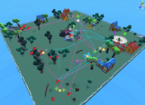
(English) Game developers gain insights from working on projects that use game evaluation tools supported by artificial intelligence. [자세히 읽기]
독특한 렌즈를 통해 바라 보아야 하는 게임업계를 위한 UX 연구

게임업계는 다른 인터페이스와는 매우 다르게, 비디오 게임을 위해 최적화된 경험을 창출해내야 하는 업계만의 도전 과제를 아는 UX 연구자들을 필요로 합니다. [자세히 읽기]
(English) Beyond Player Experience: Designing for Spectator-Players

(English) Crafting meaningful and engaging games for spectator-players requires new UX research and design methods. [자세히 읽기]
기억 모노폴리(Memoir Monopoly): 치매 노인들을 위한 재활 활동 개선

대만의 연구원들이 전 세계적으로 증가하고 있는 치매와 알츠하이머 환자들의 재활을 돕기 위한 치료 활동지원용 소프트웨어를 개발했습니다. [자세히 읽기]
팬과 함께 혁신하기: 소셜 게임과 기술 디자인

사용자의 전문 지식이 디자이너의 솔루션 전문 기술과 연결될 때 신제품들이 인기를 얻습니다. 라인(LINE)과 포켓몬 고 같은 소셜 게임은 연결된 팬 공동체의 힘을 보여줍니다. [자세히 읽기]
세서미 스트리트, 글자 블록, 그리고 증강 현실: 늘어나는 참여와 학습

전통적 글자 블록과 글자 기반의 태블릿 콘텐츠가 접목된 비선형 놀이 경험을 디자인하면서 얻은 교훈. [자세히 읽기]
학습의 게임화: 아시아의 관점
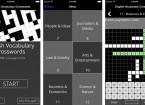
아시아의 학교들은 학생들의 동기부여와 참여를 높이기 위해 모바일 어플리케이션과 증강 현실, 가상 현실의 활용을 활발하게 탐구하고 있습니다. [자세히 읽기]
공동 창조자로서의 사용자: 플레이어 중심의 게임 디자인

애자일 개발 환경의 게임 디자인 과정이 사용자 중심적이 되고, 플레이어 피드백과 실제 사용자의 조언을 통합하는 방식 [자세히 읽기]
게임을 능가하다: 게임 사용자 연구의 어려운 점과 최근에 부각되는 방법들

게임 개발에는 사용자 요구에 관한 깊은 지식이 요구됩니다. 게임 사용자 연구는 확실하게 인정받는 사용성 연구 방법을 활용하는 것 외에도 사용자 행동을 이해하기 위해서 생물측정학의 발전 사항들을 점점 더 많이 통합하고 있습니다. [자세히 읽기]
교육용 게임: 몰입형 학습 경험을 위한 10가지의 디자인 팁
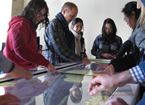
복잡한 생물의학적 주제 교육을 위한 게임 디자인의 10가지의 실전 요령. 더 어려운 일은 독자가 게임을 하지 않는 의료 전문가라는 것이었습니다. [자세히 읽기]
더 훌륭한 게임: 아이 트래킹을 통한 통찰

아이 트래킹은 사용자 평가 게임을 위한 유용한 도구입니다. [자세히 읽기]
(English) Play Your Way to Productivity: Using Game Design to Achieve “Flow”

(English) The Email Game, a productivity game inspired by the linearity of in-game tasks, structures your workday into unit-based sessions, breaking work into manageable units. [자세히 읽기]
(English) Social Games with Words: A Short History of Implementations
(English) Knowing the strengths and weaknesses of a platform is critical to getting the most out of user interface designs for it. [자세히 읽기]
(English) Designing Games for Non-Gamers: Rapid Prototyping as a Design Methodology
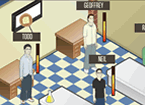
(English) In designing games for non-gamers, provide more clarity in the tutorial and game mechanics and do not to rely on players’ prior digital media expertise. [자세히 읽기]
(English) Multi-screen Games and Beyond: New Dimensions in User Interaction
(English) User experiences, and thus games, evolve with continued interaction with and between screens everywhere. [자세히 읽기]
(English) Simplifying Game Interfaces: Principles for Hiding UI Complexity

(English) Correctly amplifying the microscopic motions of thumbs on a game controller to avoid over-whelming first time players may be achieved through context sensitivity. [자세히 읽기]
(English) Using Biometrics to Reveal Insights into the Player Experience
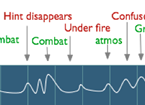
(English) Biometric sensors, particularly EMG and EEG, help user researchers in understanding digital experiences, gaining insight into how users experience websites. [자세히 읽기]
(English) Playing to Learn: Teaching User Research to Game Design Students
(English) Students of Game Player Experience understand the value of user research first hand by learning good game user experience principles and seeing those principles implemented. [자세히 읽기]
(English) Games in the Real World: Some Characteristics We Can Use
(English) User experience designers capitalize on the gameful attributes of everyday activities, influencing human behavior to promote new kinds of interactions, creating change in the real world. [자세히 읽기]
(English) Looking to Games for the New User Experience: What Other Website Interfaces Can Learn
(English) Games have come a long way since the 1980s when gamers—in the modern video game sense—were a young, fringe lot. [자세히 읽기]
(English) On the Edge: Gaming the User Experience
(English) Game design often seems to turn usability principles upside down: traditional, information-oriented design values the standards of usability, usefulness, and appeal, but game developers start from the other direction and work back. [자세히 읽기]
(English) Editor’s Note: Games, Gameplay, and Gamification

(English) Game design has come a long way. Game-conscious UX, whether in traditional games or gamified-applications, will play an important role in the future. [자세히 읽기]
(English) Engaging with Mental Health: Opportunity for Collaboration

(English) Collaboration between human-computer interaction (HCI) and mental health professionals can play a valuable role in future research on mental health technologies. [자세히 읽기]
(English) Keep It Simple. At First: Designing Game-Based Tools for Youth

(English) Research with adolescent World of Warcraft players indicated design strategies that will help make Massive Multiplayer Online Game more accessible for individuals of all ages. [자세히 읽기]
(English) What’s News: Thoughts as Art
Sorry, this entry is only available in English. [자세히 읽기]
(English) The View from Here: Game Over?
(English) People with physical disabilities want, demand, and deserve to play games. Let’s make games more accessible, for them and for our future selves. [자세히 읽기]
(English) What’s News: Wii Usability Woos Non-Gamers
(English) Nintendo broke a usability barrier with its Wii gaming system by creating an interface that could be easily learned by users less experienced with gaming. [자세히 읽기]
(English) Power Play (Issue 3.3)
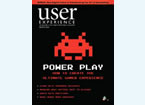
(English) Games, gamers, emotions and storytelling. (Full text not available) [자세히 읽기]

